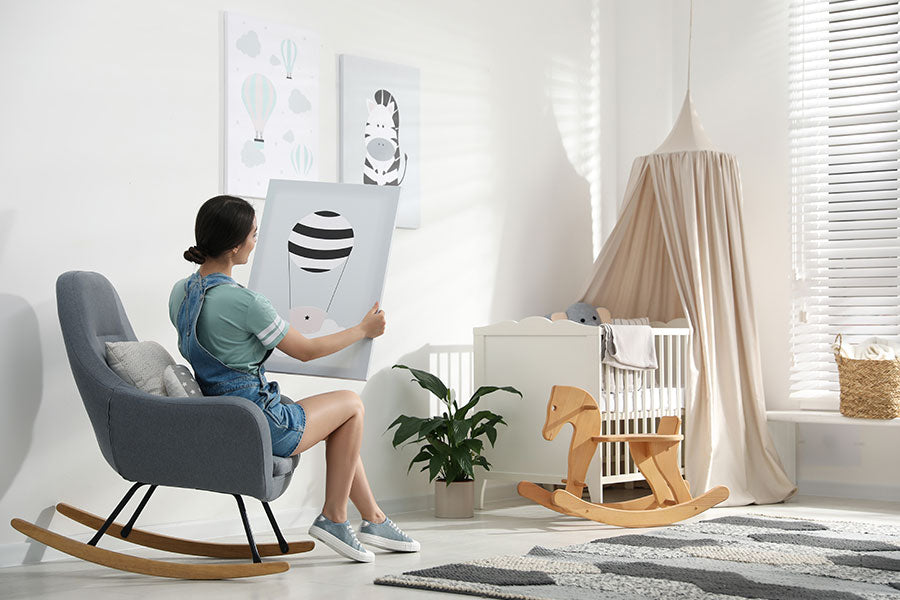
10 Tips & Tricks For Hanging Wall Art Like A Pro
Share
Hanging wall art is an art in itself. When done right, it can elevate your home's décor and turn even the most ordinary spaces into eye-catching focal points. As a homeowner or interior designer, it's essential to know the tips and tricks for hanging wall art like a pro. This article explores the 10 best practices for showcasing your favorite pieces, ensuring they make the desired impact and enhance your living space.

1. Choose the Correct Height
The ideal height will allow the viewer to appreciate the artwork fully and ensure it harmonizes with the room's design. A good rule of thumb is to hang pieces at eye level, approximately 57 to 65 inches from the floor. This also applies to groups of artworks or gallery walls.
2. Plan Your Layout
Before you even pick up a hammer, plan your wall art layout. Use craft paper or tape to create your artwork template on the wall. This allows you to adjust the composition and position until it's just right. Experiment with diverse placements and consider the room's purpose and furnishings as you plan your layout. Avoid aligning the pieces too rigidly for an organic, visually balanced look and leave room for negative space.
3. Maintain Consistency and Balance
Consistency and balance are key elements in creating a professionally hung display. Keep consistent spacing between artworks, generally around 2 to 3 inches, and ensure the collection has a sense of balance. This may mean mixing smaller pieces with larger ones and striking a balance between colors, frames, and subject matter.
4. Use the Right Hardware
Not all wall art is created equal, and the hardware you use should accommodate the weight and size of your art. For lighter pieces, picture hangers or adhesive hooks will suffice. Use anchor bolts or molly bolts to provide secure support for heavier or more valuable art. When hanging artwork with wire, ensure the wire's length is twice the width of the frame to create a stable hanging position.
5. Create a Focal Point
Each room should have a focal point where the eye naturally gravitates. Wall art can be an excellent focal point, whether an oversized canvas or an arrangement of smaller pieces. Hang your wall art above a fireplace, a console table, or a large piece of furniture to lend impact to the space.
6. Think Beyond the Frame
While traditional framed art certainly has its place, explore different methods for displaying your wall art. Use picture ledges, hang your art from a rod or elegant ribbon, or even consider an unframed canvas. Be creative and let your style shine through.
7. Don't Be Afraid to Rearrange
Even after hanging your wall art, don't be afraid to make adjustments over time. Rearrange, refresh, and update your display to keep it fresh and engaging. You can also switch out artwork seasonally or add new pieces to your collection in the future.
8. Utilize Lighting
Proper lighting enhances the attractiveness of your wall art and adds ambiance to your space. Illuminate your artwork using picture lights, track lighting, or adjustable wall sconces. Make sure the lighting is evenly distributed and free from glare.
9. Incorporate Nature or Textiles
Using items like botanical prints, pressed flowers, or antique maps can create a sophisticated and interesting vibe in your space. Textiles such as tapestries, wall hangings, or kilim rugs add texture and warmth to your décor, boosting visual interest.
10. Exploit Architectural Features
Finally, make the most of your home's architectural features when hanging your wall art. Use unique wall niches or built-in shelving to showcase your art or make a statement by hanging pieces on unexpected surfaces, such as a sloped ceiling or staircase wall.
